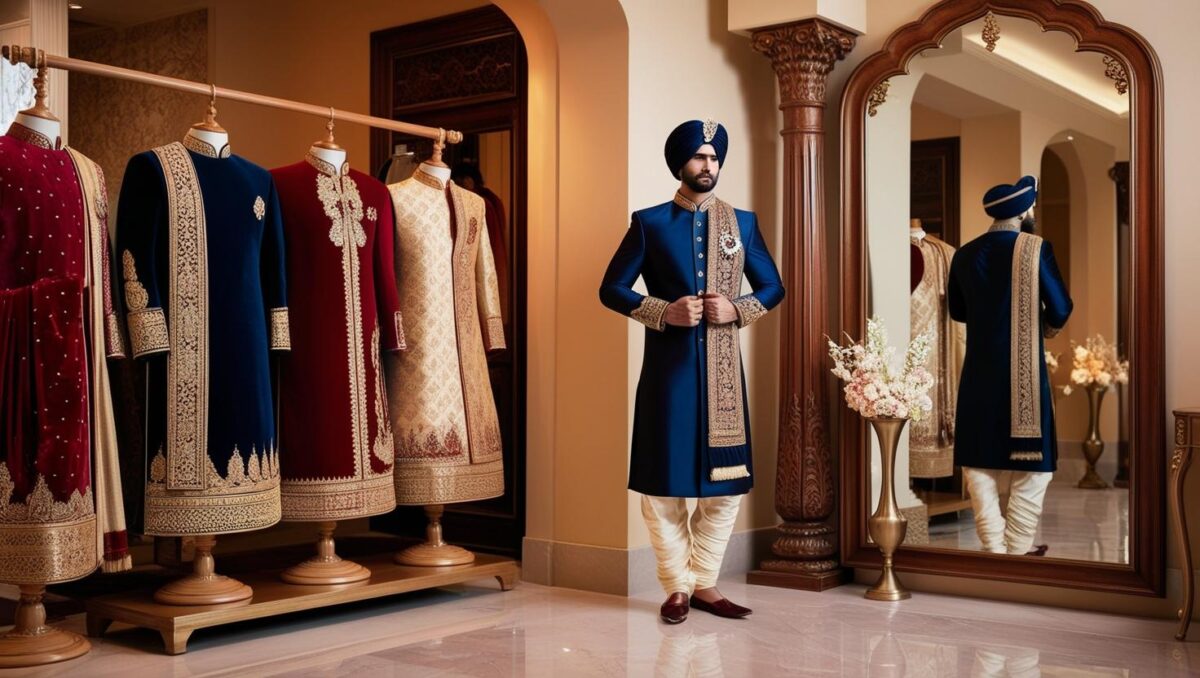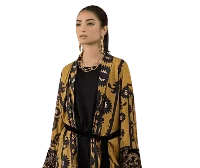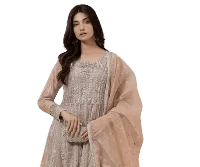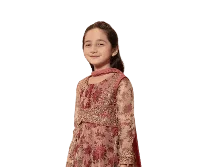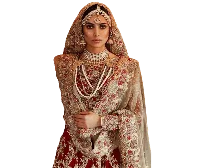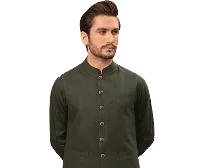Uncategorized
Types of Sherwanis: Traditional, Modern & Wedding Styles Explained
Sherwanis have long symbolized Mughal grandeur and Indo-Persian craftsmanship, making them a cornerstone of South Asian ethnic wear. This majestic knee-length coat, inspired by the Persian “Qaba,” was once adorned by emperors like Akbar and Shah Jahan. Over time, Men Sherwani have evolved from zardozi-laden masterpieces by Lucknowi karigars to modern styles that blend tradition with innovation. Whether worn at wedding mandaps, Eid celebrations, or Diwali soirees, Sherwanis remain an essential part of the Indian subcontinent’s sartorial legacy.
Today, designers like Sabyasachi and Tarun Tahiliani have redefined the Sherwani with asymmetrical cuts and digital prints, turning it into a fashion spectacle from Delhi to Dubai. Whether you prefer Rajasthan’s Bandhgala silhouettes, a linen Angrakha for a Punjabi sangeet, or an Achkan for receptions, choosing the right Sherwani depends on fabrics (velvet for winter, chiffon for summer), embellishments (kundan vs. resham), and silhouettes (Jodhpuri for pheras) to suit your style and occasion. To complete the look, a brocade turban adds the perfect regal touch.
Types of Sherwanis Based on Design & Style
Each Sherwani style is unique, offering a distinct appeal. Below are the most popular types:
Achkan Sherwani
The Achkan Sherwani embodies Mughal minimalism with its cropped silhouette ending just above the knee, a style once favored in Darbaar-e-Aam (Mughal courts). Known for its delicate jali ka kaam (pierced embroidery) and gota patti borders, it exudes subtle opulence. Traditionally crafted from lightweight Khandela cotton, it is perfect for summer weddings, while a chikankari kamarband (waist detailing) enhances its semi-formal charm. Modern grooms often pair this elegant Sherwani with Mojari juttis for mehndi or sangeet functions, blending heritage with contemporary sophistication.
Jodhpuri Sherwani
Inspired by Rajputana regalia, the Jodhpuri Sherwani exudes warrior aristocracy with its structured Bandhgala collar and oxidized silver buttons. Crafted from the breathable yet regal Kota doria weave, it offers comfort without compromising grandeur. Traditionally paired with Jodhpur breeches, this style stands out at royal weddings, especially when adorned with a kundan kalgi (turban ornament). Its timeless appeal makes it a preferred choice for pheras and reception events
Angrakha Sherwani
The Angrakha Sherwani features an asymmetric pallu (cross-over drape), a design favored by Mughal emperors like Akbar, who helped popularize this regal style. Crafted from luxurious Jamawar brocade or adorned with intricate naqshi zari (raised threadwork), it exudes opulence, while a patka sash cinches the waist for a well-defined silhouette. Perfect for grand weddings, this Sherwani pairs elegantly with a Dastar-e-Mughalia (Mughal turban) and Kundan necklaces, creating a majestic and timeless royal ensemble.
Indo-Western Sherwani
Blending Savile Row tailoring with Indian craftsmanship, the Indo-Western Sherwani showcases intricate Baroque motifs and elegant cape drapes for a contemporary touch. Crafted from Tussar silk blends, it offers eco-luxury, while monochrome minimalism appeals to modern, urban grooms. Perfect for destination weddings, this style often features military frogging (structured braiding), adding a sharp and sophisticated edge to its fusion of tradition and modernity.
Jacket Style Sherwani
Exuding Nehruvian chic, the Jacket Style Sherwani layers a Kalamkari-lined jacket over a kurta. Its Bemberg silk interiors ensure a luxurious feel, while Jadau brooches add a touch of vintage charm. A popular choice for cocktail receptions, this versatile Sherwani pairs effortlessly with dhoti pants or tailored trousers. The military-inspired frogging detail pays homage to post-independence era fashion, adding a refined yet contemporary flair.
Pakistani Sherwani
Showcasing exquisite craftsmanship, the Pakistani Sherwani is distinguished by Lahori resham (intricate threadwork) and Peshawari kaam (front panel embroidery), reflecting the rich textile heritage of the region. Its elongated silhouette pairs effortlessly with chooridaar pants, creating a refined and regal look, while Multani mirrorwork infuses a touch of tribal allure. To complete this authentic South Asian wedding ensemble, traditional Khussa footwear (hand-stitched mojris) adds the perfect finishing touch.
Printed & Floral Sherwani
Combining breathability with artistic charm, the Printed & Floral Sherwani is crafted from Kora cotton and adorned with Ajrakh block prints or Charbagh motifs (Mughal garden patterns). Pichwai-inspired florals and tilla borders (metallic edging) add a touch of elegance, making it an ideal choice for beachside or daytime weddings. Lightweight yet visually striking, this Sherwani is perfect for grooms who appreciate understated sophistication with a cultural essence.
Chipkan Sherwani
Steeped in Dastaan-e-Awadh (Lucknowi nostalgia), the Chipkan Sherwani is a timeless masterpiece featuring a fitted waist and flared hemline (Gulbadan drape), reminiscent of royal Awadhi attire. The delicate Kamdani tilla (fine wire embroidery) and shimmering mukesh accents (silver threads) create an ethereal, luminous effect. To complete its regal charm, a Nawabi saafa (Awadhi turban) serves as the perfect crowning touch, making it an excellent choice for grooms who seek vintage grandeur without excessive embellishments.
Accessories to Pair with Sherwanis
A Sherwani’s elegance is elevated by carefully chosen accessories, each rooted in regional traditions or modern luxe. The Rajasthani Pagdi or Hyderabadi Topi (pearl-encrusted) adds regal flair, while a Punjabi Dastaar complements Sikh grooms—embellished with Kalgi pins or Sarpech aigrettes for Mughal-inspired opulence. For drapes, opt for an Awadhi-style dupatta with kamdani lace edges or a Kashmiri sozni-embroidered chiffon stole, layered like royalty.
Jewelry like Kundan chokers (Jaipur style) or Polki necklaces (Hyderabadi nobility) enhances grandeur, while Lahori khussa mojaris or meenakari juttis ground the look in tradition. Don’t overlook details—Jadau buttons (Bikaneri craftsmanship) or a Parsi gara brooch add finesse, and a velvet kamarbandh cinches the silhouette. For modern grooms, Gucci-inspired juttis or a Titanium collar pin blend heritage with contemporary edge.
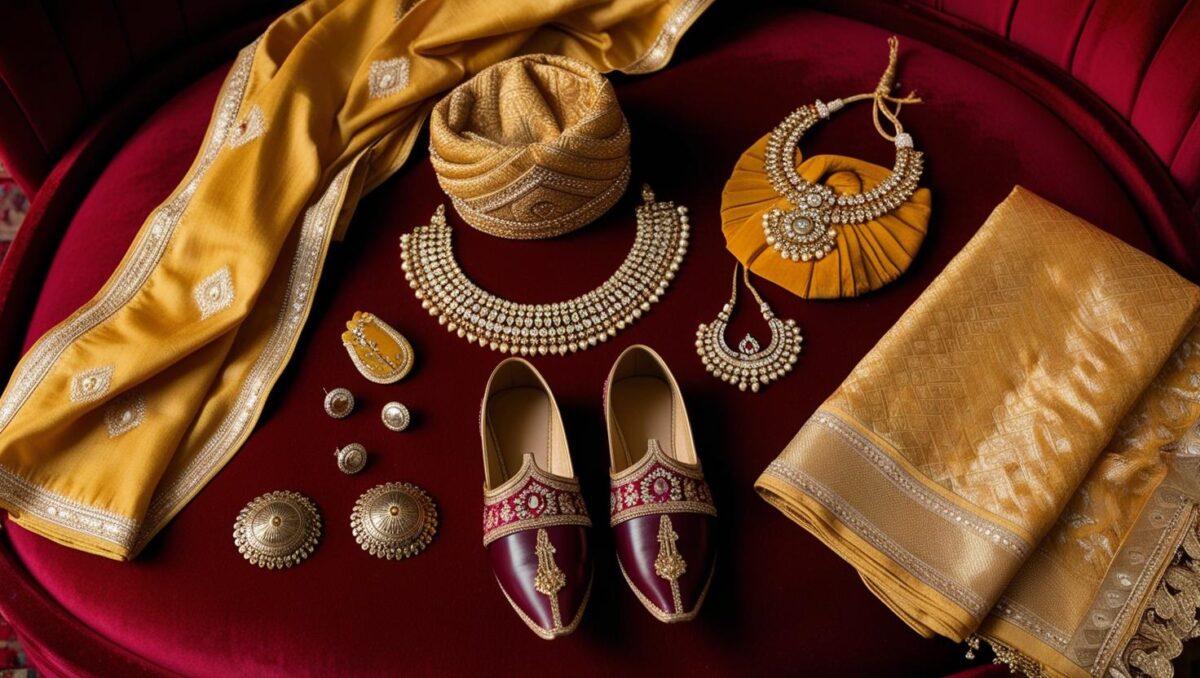
Traditional vs. Modern Sherwanis
Sherwanis come in various styles that cater to both traditional and contemporary fashion tastes. Understanding these categories can help you pick the right one for your occasion.
Traditional Sherwanis
Rooted in Mughal and Rajput grandeur, traditional Sherwanis feature hand-stitched zardozi on velvet or brocade fabrics, with structured Bandhgala collars and ankle-length cuts. These heirloom-quality pieces shine at wedding pheras and Diwali celebrations, often paired with churidars and juttis for a complete royal elegance.
Modern Sherwanis
Reimagining tradition through Indo-Western silhouettes, modern Sherwanis introduce asymmetrical hemlines, linen-cotton blends, and minimalist threadwork. Designers like Sabyasachi and Rohit Bal fuse Baroque motifs with bandhgalas, crafting versatile options for destination weddings or cocktail receptions. Some designs incorporate jacket drapes or digital prints, making them ideal for fashion-forward grooms.
Key Difference
While traditional styles honor Lucknowi chikankari and Jaipuri gota patti, modern cuts prioritize wearability and fusion trends—perfect for grooms balancing culture and contemporary flair.
Where to Buy the Best Sherwanis?
For authentic Mughal-inspired zardozi Sherwanis, contemporary Indo-Western fusion designs, and premium Banarasi silk ensembles, explore Imani Studio’s curated collection. We offer handcrafted Lucknowi chikankari, regal velvet bandhgalas, and lightweight linen Sherwanis—perfect for weddings, festive occasions, and formal gatherings. Visit our store for bespoke tailoring and ready-to-wear masterpieces that blend traditional craftsmanship with modern aesthetics.


